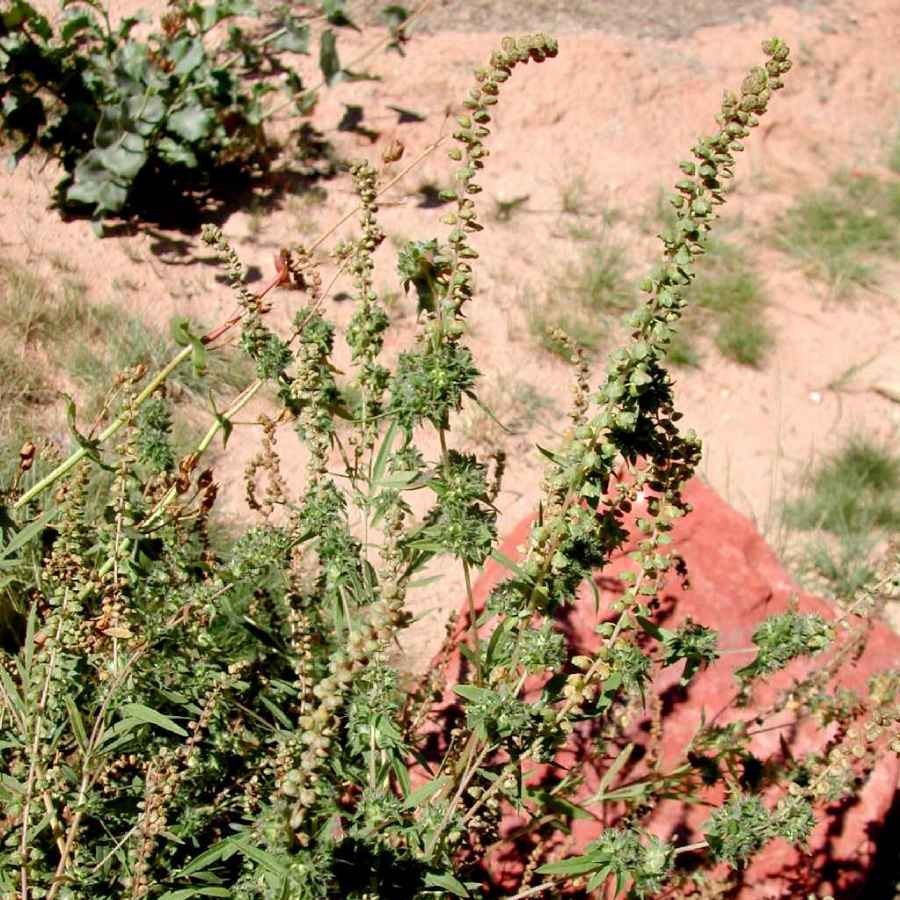Search
View the original page version
Ambrosia
|
Family: Asteraceae |
Annuals, perennials, or shrubs, 10-400+ cm (usually rhizomatous). Stems erect, decumbent, or prostrate, branched. Leaves usually cauline; opposite ± throughout or opposite (proximal) and alternate or mostly alternate; sessile or petiolate; blades (or lobes) deltate, elliptic, filiform, lanceolate, linear, obovate, ovate, or rhombic (and most intermediate shapes), usually pinnately, sometimes palmately lobed, ultimate margins entire or toothed, faces hairy or glabrate, usually gland-dotted or stipitate-glandular. Heads discoid (unisexual, pistillate proximal to or intermixed with staminates, staminates usually in racemiform to spiciform arrays; rarely, single plants all or mostly staminate or pistillate). Pistillate heads: phyllaries 12-30(-80+) in 1-8+ series, outer (1-)5-8 distinct or ± connate, herbaceous, the rest (sometimes interpreted as paleae) ± connate, usually with free tips forming tubercles, spines, or wings (the whole becoming a hard perigynium or 'bur'); florets 1(-5+), corollas 0. Staminate heads: involucres cup-shaped to saucer-shaped, 1.5-6+ mm diam.; phyllaries 5-16+ in ± 1 series, ± connate; receptacles ± flat or convex; paleae spatulate to linear, membranous, sometimes villous, hirtellous, and/or gland-dotted or stipitate-glandular, sometimes none; florets 5-60+; corollas whitish or purplish, ± funnelform, lobes 5, erect or incurved; staminal filaments connate, anthers distinct or weakly coherent. Cypselae (black) ± ovoid or fusiform, enclosed within globose to obovoid, pyramidal, pyriform, obconic, or fusiform, hard, smooth, tuberculate, spiny, or winged 'burs'; pappi 0. x = 18. Heads numerous, small, unisexual, rayless; staminate heads in a racemiform or spiciform, bractless infl, with subherbaceous, 5-12-lobed invol, flat receptacle with slender, filiform-setose pales, monadelphous filaments, scarcely united anthers, and undivided style; pistillate heads borne below the staminate, in the axils of lvs or bracts, with closed, nutlike or burlike invol bearing 1-several rows of tubercles or spines and containing 1(-several) pistillate fls without cor; pappus none; herbs (ours) or shrubs; lvs often lobed or dissected, in most spp. opposite at least below. 40, predominantly New World. (Franseria) Gleason, Henry A. & Cronquist, Arthur J. 1991. Manual of vascular plants of northeastern United States and adjacent Canada. lxxv + 910 pp. ©The New York Botanical Garden. All rights reserved. Used by permission. |

